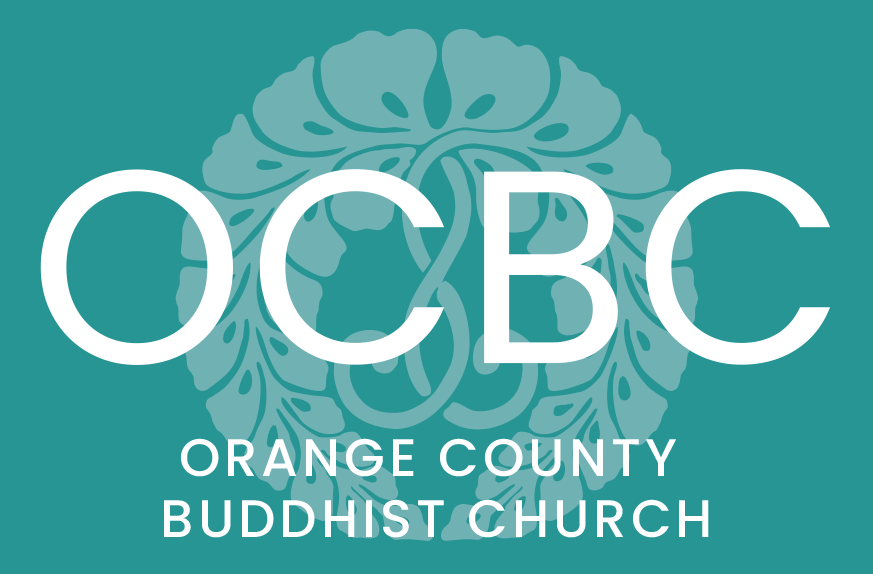Shin Reader - Discovering Buddhism in Everyday Life by Rev. Marvin Harada
Discovering Buddhism in Everyday Life by Rev. Marvin Harada is a collection of essays from the first 25 years of his ministry at the Orange County Buddhist Church. Originally these were submitted monthly to our newsletter, the Korin. These "Minister Messages" continue in the tradition of Everyday Suchness and The Center Within, two books written by his teacher Rev. Gyomay Kubose. Buddhism can often become very intellectual and philosophical, losing its connection to the lives of everyday people. Buddhist practice should focus on both the intellect and our emotions. This book helps balance these two approaches by offering everyday examples of Buddhist teachings. The head and the heart are both addressed in equal measure within these essays. It is important to remember that though an essay may appear simple, this does not mean that it is simplistic. For example, the greatest mathematicians can make even calculus seem simple and easy to understand for the student. Rev. Harada is such a teacher.
You might think of this book as a collection of Rev. Harada’s greatest hits. All of his Korin essays are very meaningful, but this book contains the ones that stand out, the most exceptional ones. Several are my personal favorites. For example, from March 1988, there is Somewhere Over the Rainbow focuses on the importance of the path and friends on Dorothy’s journey. In this case, a yellow brick road along with the Scarecrow, Tin Man, and Lion, and especially her dog Toto, too. I also just saw my daughter Emily’s districtwide high school production of this musical at Garden Grove High School.
It is quite interesting that each of them on their journey already had what they sought. The Scarecrow was the smartest of them all, and yet he yearned for a brain. He was so smart that he could get the apple trees to throw their apples at them so they could eat. The Tin Man wanted a heart, and yet he was already the most feeling and compassionate person in the group. It was the Lion who was the bravest one throughout the story. Courage was something he craved and yet already possessed. The story ends with Dorothy realizing that there is no place like home. Everything she ever needed or wanted was already in Kansas. She would want nothing for the rest of her life after realizing this.
There is The Waving Man of Berkeley from April 2002. It is a story of a man standing on a street corner waving to every car. Rev. Harada returned the wave every time he commuted to the Institute of Buddhist Studies from Oakland to Berkeley and back again. I have thought about this story often. Sadly, our first thought is that a person like this must be disturbed, but perhaps they are just happy and friendly. There is a person just like this living behind the OCBC campus. Every morning when I drive in, he waves to me. Just like this story, I was startled, but when I returned the wave, we connected in a very personal way. I roll down my window to make sure he can see me wave back.
I also experienced the essay Reflections on the Grand Canyon from November 2010. It is about a pine tree that is growing out the side of the Grand Canyon. It is holding onto life. It is as if it is saying:
“You can endure anything in life. Don’t be so soft! You can endure failure. You can endure criticism. You can endure whatever life presents to you. Just live your life.” (pg. 127)
I too have seen this every day as I drive into OCBC. I have to turn left at a T-intersection as I leave my neighborhood. Before turning, I am facing a cinderblock wall that is across the street. There is a seam in the bricks between two houses. Through this crack, a bougainvillea vine is growing, pushing its way through, out into the sunshine, reaching up to the sky in full bloom. It always reminds me of this pine tree that Rev Harada saw at the Grand Canyon.
This is a very special book for two reasons. The first reason is that these essays date from October 1987 to February 2011. I didn’t begin to attend OCBC until May 1999 and didn’t realize there was such a thing as Korin “Minister Messages” until much later. So, this is the only way I could encounter essays like these, ones that were before my time.
And second, how amazing it is that I have been able to experience these same stories firsthand in my own life. I didn’t realize this until I began to write this review. This is how a teacher and a Sangha help us on the path. They show us the road signs along the way that we should be mindful of and which make us more aware.
I too saw the Wizard of Oz, the Waving Man, and the Crawling Bougainvillea. Perhaps all these essays can be experienced within our everyday life as Buddhist teachings. We need a guide to point these things out to us; otherwise, we might just drive right by them. It is books like this one that helps us in Discovering Buddhism in Everyday Life! –
Review by Rev. Jon Turner

